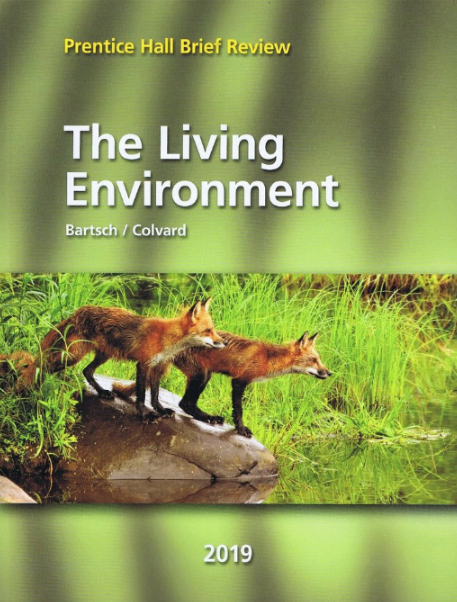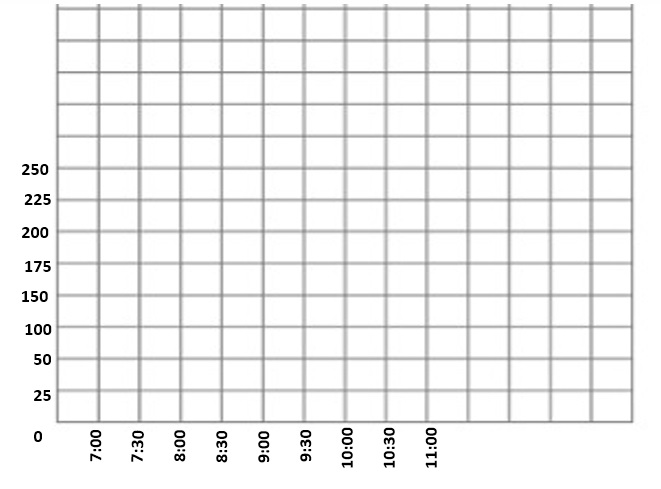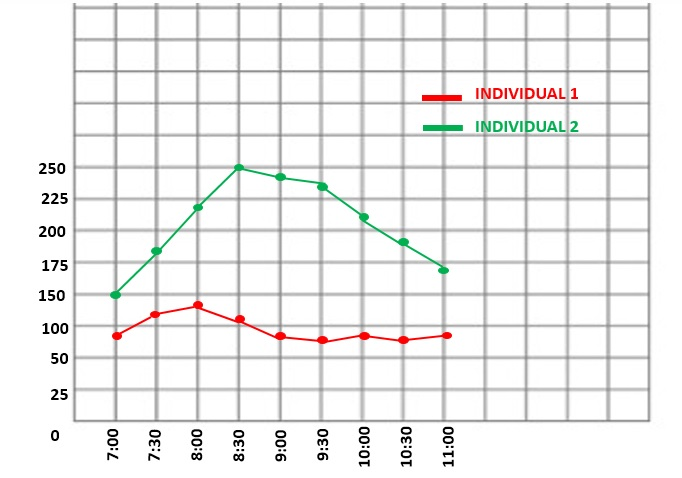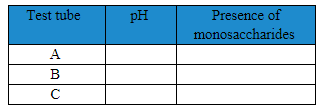
Prentice Hall Brief Review: The Living Environment 2019
ISBN: 9781418292164
Textbook solutions
All Solutions
Page 38: Practice Questions
Exercise 1
Step 1
1 of 2
The answer is 4. Plants are the number one source of oxygen for us humans. we breathe in oxygen that came from the plants and plants breathe in carbon dioxide from us humans.
Result
2 of 2
4
Exercise 2
Step 1
1 of 2
The answer is 4. Trees are the one responsible for releasing oxygen into the atmosphere. This is done by way of photosynthesis when plants use energy produced by the sun to produce carbon dioxide and glucose.
Result
2 of 2
4
Exercise 3
Step 1
1 of 2
The answer is 3. Photosynthesis is defined as the process wherein producers such as plants or algae produce their food using the sun’s energy by converting it into carbohydrates.
Result
2 of 2
3
Exercise 4
Step 1
1 of 2
The answer is 3. Photosynthesis is defined as the process wherein producers such as plants or algae produce their food using the sun’s energy by converting it into carbohydrates.
Result
2 of 2
3
Exercise 5
Step 1
1 of 2
The answer is 3. Cellular respiration is the process wherein energy from nutrients are converted into ATP for usage of cells.
Result
2 of 2
3
Exercise 6
Step 1
1 of 2
The answer is 1. A chloroplast is the one responsible for producing food for the plant cell. It is considered as one of the parts that are essential to the cell.
Result
2 of 2
1
Exercise 7
Step 1
1 of 2
Th answer is 3. Photosynthesis is defined as the process wherein producers such as plants or algae produce their food using the sun’s energy by converting it into carbohydrates. Photosynthesis takes out carbon dioxide from the atmosphere, and then use it to convert to glucose.
Result
2 of 2
3
Exercise 8
Solution 1
Solution 2
Step 1
1 of 2
Cellular respiration in plants convert sugars (mainly C$_6$H$_{12}$O$_6$) and requires O$_2$ to produce carbon dioxide and water in aerobic respiration.
Result
2 of 2
1
Step 1
1 of 2
The answer is 1. Cellular respiration is the process wherein bacteria transform biochemical energy from acquired nutrients into ATP. This process produces carbon dioxide from glucose.
Result
2 of 2
1
Exercise 9
Solution 1
Solution 2
Step 1
1 of 2
Guard cells are responsible for the control of gas exchange. These regulate the rate of transpiration by opening and closing the stomata.
Result
2 of 2
4
Step 1
1 of 2
The answer is 2. A chloroplast is the one responsible for producing food for the plant cell. It is considered as one of the parts that are essential to the cell. This is also responsible for the exchange of gases between the atmosphere and the plant.
Result
2 of 2
2
Exercise 10
Step 1
1 of 2
The answer is 4. Cellular respiration is the process wherein energy from nutrients are converted into ATP for usage of cells.
Result
2 of 2
4
Exercise 11
Step 1
1 of 2
The answer is 2. The major source of weight gain in a growing plant is carbon dioxide. Plants take in carbon dioxide in order to convert it to glucose or carbohydrates.
Result
2 of 2
2
Exercise 12
Step 1
1 of 2
The answer is 1. Photosynthesis is defined as the process wherein producers such as plants or algae produce their food using the sun’s energy by converting it into carbohydrates. From CO2, it is converted to glucose or carbohydrates.
Result
2 of 2
1
Exercise 13
Step 1
1 of 2
The answer is 2. A chloroplast is the one responsible for producing food for the plant cell. It is considered as one of the parts that are essential to the cell. It is also the one responsible for the process of photosynthesis.
Result
2 of 2
2
Exercise 14
Step 1
1 of 2
The answer is 1. Enzymes are utilized for enhancing the rate of special chemical reactions without being taken up. Enzymes can be like locks and keys wherein an enzyme is like a lock and a substrate is the key and the only way to activate the enzyme is if it is combined with a specific substrate.
Result
2 of 2
1
Exercise 15
Step 1
1 of 2
The answer is 1. According to the data given, we can see that an enzyme when at 37 degrees, has its peak activity as well as with the pH of 8.
Result
2 of 2
1
Exercise 16
Step 1
1 of 2
The answer is 2. Antibodies function, in general, by directly destroying antigens, starting complement or by initiating inflammation to halt the proliferation of the infectious agent.
Result
2 of 2
2
Exercise 17
Step 1
1 of 2
The answer is 4. WBC is an important factor when dealing with an infection. Once a helper T cell faces a B cell already in contact with an antigen, the T helper cells produce cytokines to help B cells multiply and enlarge other B cells which are of the same features.
Result
2 of 2
4
Exercise 18
Solution 1
Solution 2
Step 1
1 of 2
The answer is 3. Cellular respiration is the process wherein bacteria transform biochemical energy from acquired nutrients into ATP, cabon dioxide and water.
Result
2 of 2
3
Step 1
1 of 2
Cellular respiration needs oxygen (O$_2$) to form ATP. Glucose (C$_6$H$_{12}$O$_6$) is broken down to turn it back to CO$_2$ to be used in photosynthesis later.
Result
2 of 2
3
Exercise 19
Result
1 of 1
The energy connection between glucose and the formation of ATP is that this process happens in cellular respiration. When glucose and oxygen are combined together, they undergo a certain reaction which in turn, creates carbon dioxide and ATP as the result.
Exercise 20
Result
1 of 1
In photosynthesis, the source of energy is from the sun. Photosynthesis is a reaction which occurs in plants that convert carbon dioxide into glucose by the help of sunlight.
Exercise 21
Result
1 of 1
The energy from the sunlight is converted into chemical energy in order to form glucose or other carbohydrates for the plant’s nutrients.
Exercise 22
Result
1 of 1
The process of photosynthesis is important for living things because as we all know plants produce oxygen for us human to breathe in.
Exercise 23
Result
1 of 1
Cellular respiration is important in our life because without respiration, necessary tasks would not be performed. The process of cellular respiration is needed to provide energy for us to do things which are needed.
Exercise 24
Step 1
1 of 2

Result
2 of 2
APPROPRIATE SCALE
Exercise 25
Step 1
1 of 2

Result
2 of 2
PLOTTING
Exercise 26
Step 1
1 of 2
The chemical X would most likely be insulin. Insulin is a drug or chemical that lowers blood sugar levels for those individuals that do not have or lack the capability of breaking down glucose in order to eliminate it.
Result
2 of 2
insulin
Exercise 27
Result
1 of 1
The change in blood glucose level may be due to the effect of food entering the system as it converts to glucose during breakdown.
Exercise 28
Result
1 of 1
The relatively constant level of blood glucose is due to the normal state of glucose. The blood sugar levels remain constant because all the excess glucose were already broken down by insulin.
Exercise 29
Result
1 of 1
Insulin aids in breaking down glucose. Excess glucose is broken down for energy sources of cells as well as our body in order to do work. Without insulin, glucose builds up and may lead to a disease called diabetes.
Exercise 30
Result
1 of 1
Carbon dioxide is essential in our body as it lowers down the pH of the blood. By lowering down the pH, alkalosis is preventable. Carbon dioxide is also needed in exchange for oxygen which is the main source of air for our body.
Exercise 31
Result
1 of 1
Lyme disease is transmitted by being bitten by a tick. This tick, called the Ixodes scapularis bites an infected animal which then bites a human afterwards thereby spreading the disease.
Exercise 32
Result
1 of 1
The preventive measure taken into action would be if people would routinely check their pets for ticks and other sources of ticks in the house or environment.
Exercise 33
Result
1 of 1
Two symptoms that may occur if a person has lyme disease include a skin rash, which does immediately come out after a bite, Headaches, joint pains, muscle aches, and fever may also be experienced. Collectively, these symptoms are called flu-like symptoms.
Exercise 34
Result
1 of 1
The danger of ignoring these symptoms and not treating the infection may develop chronicity of the symptoms such as chronic arthritis, problems occurring in the heart and nervous system and in some cases, death.
Exercise 35
Step 1
1 of 2
The answer is 2. According to the data given, the independent variable is the color of the light. The color of the light shown would produce different amounts of CO2 based on the color shown.
Result
2 of 2
2
Exercise 36
Result
1 of 1
The problem being investigated in this experiment is to know the amount of CO2 remaining in the container after two days when exposed to different light colors.
Exercise 37
Result
1 of 1
The source of carbon used in photosynthesis is the carbon that human breathe out in exchange for the oxygen that plants make. The carbon is released in the atmosphere and is taken up by plants for processing of oxygen in return.
Exercise 38
Result
1 of 1
What can be concluded is that enzymes had a reaction on monosaccharides in test tubes 1 and 2 and no reaction on test tube 3. The test tube also had a reaction on disaccharides in test tube 3 and no reaction on test tube 1 and 2.
Exercise 39
Step 1
1 of 2
1. 5 mL sugar C solution + 1 mL enzyme X at 37$^{circ}C$ will be used for the set-up. The amount needs to be the same for 3 test tubes.
2. After 5 minutes, add 1 mL of the vinegar to one test tube. Add 1 mL of water to the second test tube, and add 1 mL of baking soda to the third test tube.
3. Record the pH of each tube.

Result
2 of 2
Effect of pH on enzyme activity
Exercise 40
Result
1 of 1
One safety precaution that should be used is the safety of using the materials. The hazards of the materials to be used should be handles with extra precaution. Avoidance of contact in the eyes, for example.
Exercise 41
Result
1 of 1
Enzymes are utilized for enhancing the rate of special chemical reactions without being taken up. The effect of high temperature makes the reaction faster but can also kill the enzyme activity in increasing amount of temperature which can also result in death.
Exercise 42
Result
1 of 1
A vaccine contains an antigen that triggers a primary immune response to counter exposure to an infectious agent or pathogen. Students still acquire mumps even if they are given vaccines because our body needs to create a memory response after the exposure so that when our body is is exposed again, our immune response would know how to respond and eliminated.
Exercise 43
Result
1 of 1
In vaccination, you introduce antigens which create memory cells, formed by the trigger of antigens from a vaccine, to respond to exposure to that same antigen from pathogens in the future.
Exercise 44
Result
1 of 1
The student can still acquire other diseases like chickenpox because the vaccine given to the student is indicated for mumps and not for the other diseases like chickenpox.
Exercise 45
Result
1 of 1
Guard cells help maintain homeostasis in plants by guarding the water, preventing it from getting out of the cell and maintaining the right amount of water needed in order to survive.
unlock

